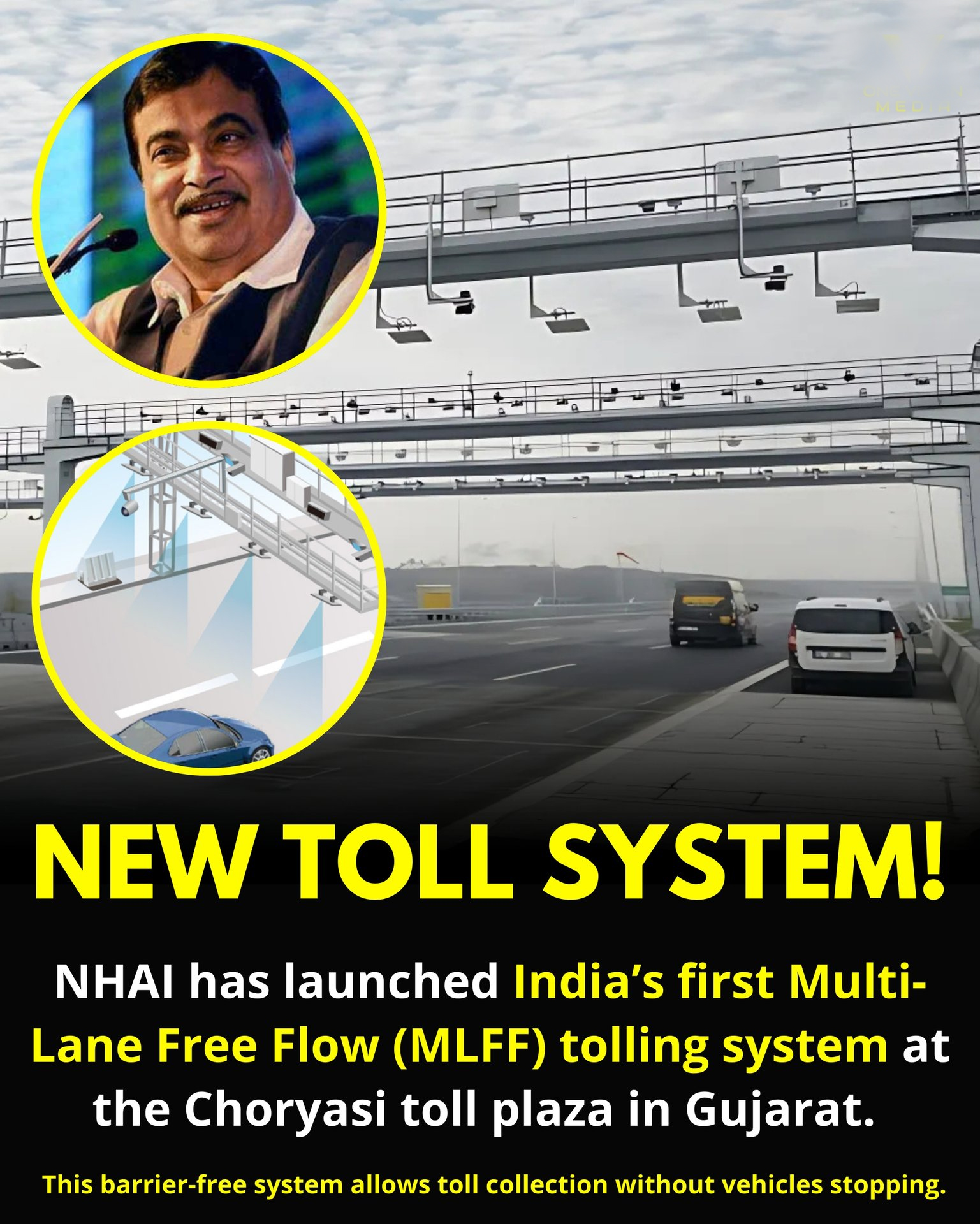Context:
Recently, The National Highways Authority of India (NHAI) has signed an agreement with ICICI Bank to implement the country's first comprehensive Multi-Lane Free Flow (MLFF) tolling system at Choryasi Fee Plaza in Gujarat on NH-48. This landmark agreement marks a significant milestone in the evolution and modernization of tolling in India.
About Multi-Lane Free Flow (MLFF):
The Multi-Lane Free Flow (MLFF) tolling system is a barrier-free, electronic toll collection method that eliminates the need for vehicles to stop at toll plazas.
· It uses RFID technology, FASTag, and ANPR (Automatic Number Plate Recognition) cameras to identify vehicles and automate toll payments.
· It can also function without tags, using only video-based license plate recognition, as implemented in Stockholm for congestion charging.
Key Technologies used:
- RFID (e.g., FASTag): A passive tag on the vehicle’s windscreen is read by gantry-mounted RFID readers. The toll amount is automatically deducted from the linked bank account or wallet, enabling seamless, contactless tolling.
- ANPR: High-resolution cameras capture the vehicle's license plate. Optical Character Recognition (OCR) software converts this image into text to identify the vehicle. ANPR is crucial for detecting non-FASTag vehicles or enforcing violations in open-road tolling setups.
How It Works:
- Gantry-Based System: Overhead gantries with RFID readers and ANPR cameras are installed on highways.
- Vehicle Identification: RFID scanners read the vehicle’s FASTag, and ANPR cameras verify the license plate.
- Automated Deduction: The toll is automatically deducted from the FASTag-linked account without requiring the vehicle to stop.
- Free Flow Movement: Vehicles continue moving at highway speeds, creating a seamless tolling experience.
Benefits:
- Reduces traffic congestion and travel time
- Improves fuel efficiency and lowers emissions
- Increases transparency in toll collection
- Supports smart, tech-enabled infrastructure development
NHAI will roll out MLFF at 25 toll plazas in FY 2025–26.
Conclusion:
The implementation of MLFF will pave the way for its adoption nationwide, transforming the way tolls are collected on Indian highways. With this innovative system, India is taking a significant step towards a more efficient and technologically advanced transportation network







